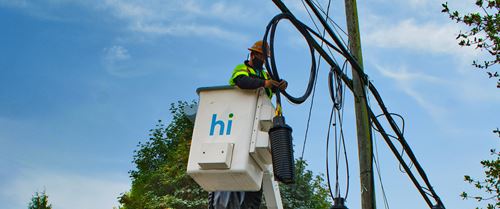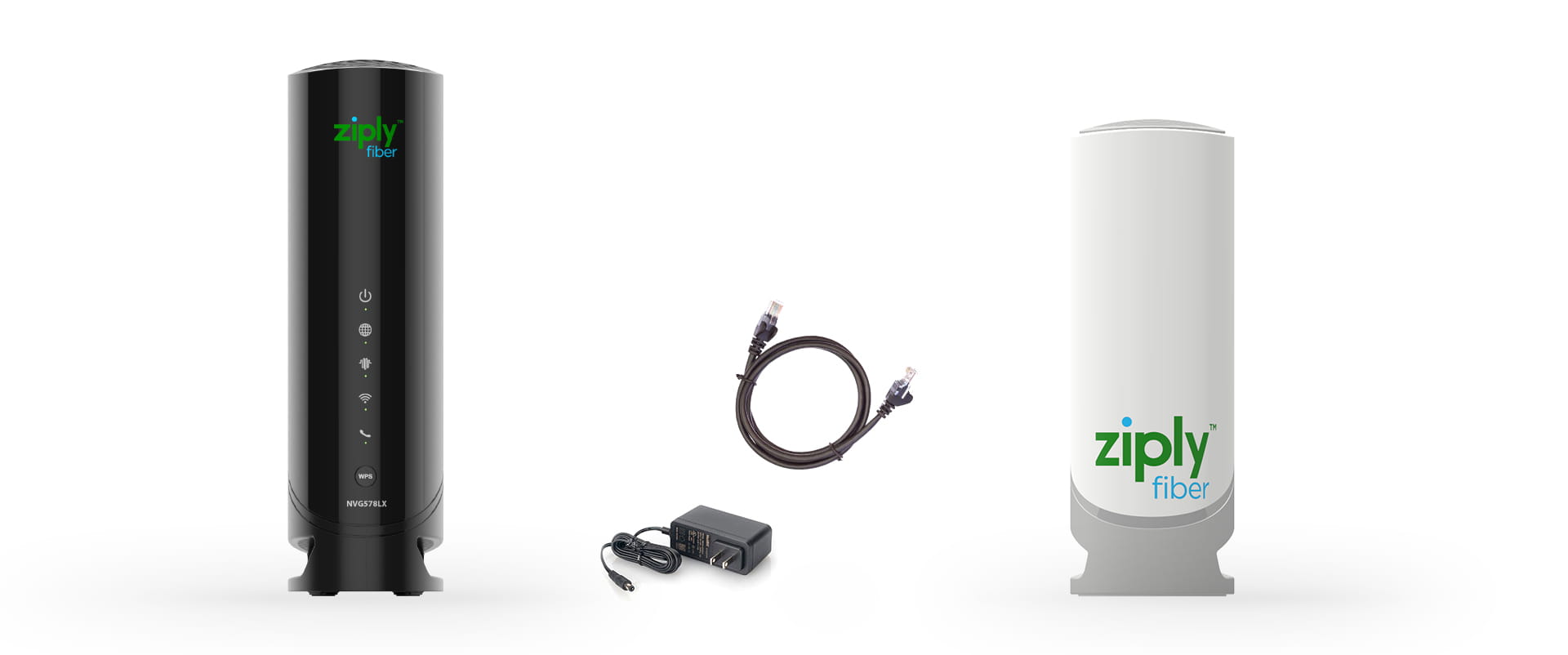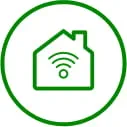Everyone wants fast internet, and word is spreading about the benefits of being on a fiber network. With fiber come faster speeds, more reliable connectivity, less latency and less network congestion. Beyond that, in some communities fiber is showing returns, including better employment opportunities and higher incomes.
So what’s the holdup? Why wasn’t fiber available in your area yesterday?
Here are a few reasons fiber hasn’t landed in your neighborhood or community yet—and what it will take to get it there.
Why doesn’t my area have gig-speed fiber-optic internet?
The short answer is that your area doesn’t have the infrastructure for fiber. Many communities, especially smaller towns and rural areas, are still using broadband or DSL, which may be sufficient for many people’s needs. But as more of our lives go online, whether to attend school, work remotely, stream Netflix or play video games, the ultra-fast, symmetrical speeds of fiber are going to become more of a demand. It’s hopefully just a matter of time and investment before your house is hooked up to the best internet on the market.
While you rarely notice or think about your internet because it’s just there, consider the fact that your WiFi signal doesn’t just come out of the sky. Are you old enough to remember the sound of your dialup connection? While we’ve come a long way from the days of “you’ve got mail,” your internet is still something that needs to be physically connected to your home.
So here are some of the challenges to getting fiber-optic internet to your area.
Geography
To bring fiber to a given area, an internet service provider (ISP) has to string fiber-optic lines to the existing utility poles or run them underground. That can be hard to do in places with topographical challenges, like mountainous or rural areas.
The good news is that the federal and local governments are aware of the digital divide—the reality that many communities are far behind others in terms of connectivity—and have been investing in fiber infrastructure development to close it. The 2021 Infrastructure Investment and Jobs Act allocated funds for installing fiber infrastructure in other rural communities across the country. State governments are lowering barriers for public utility companies to enter the market. Ziply Fiber partners with governmental agencies [link to civic engagement] to increase fiber development and lower costs for cities around the Northwest. Already, Ziply Fiber has connected parts of Idaho and Montana, two states that rank among the lowest in the U.S. for internet speed and connectivity.
Still, some areas have extra challenges to building fiber. Utility poles may not be available or amenable to connecting fiber, or the ground may be frozen or difficult to dig. Emerging practices, like microtrenching, which digs a small, narrow path for fiber lines, may become more common in areas where traditional methods of connecting fiber prove challenging. This was successful in Lake Stevens, Washington, where utility poles were not suitable for fiber. By partnering with Ziply Fiber, Lake Stevens saved time and money and dealt with less construction mess than if they had gone the traditional trenching route.
Budget
According to the U.S. Department of Transportation, the average cost of laying fiber is about $27,000 per mile. Unfair as it may be, there is little incentive for an ISP to connect a small, rural area to fiber. Providers have to hire contractors to lay fiber cable across large areas in order to bring fiber to a new place. That’s a big investment that won’t pay off if there aren’t enough people paying to use the service. So areas with small population and no source of local funding are going to be among the last to get fiber.
But again, state and local governments are aware that reliable internet is becoming a utility, and many are working with public utility companies and the private sector to help fund fiber infrastructure. While many of the larger ISPs may be too focused on the bottom line to bother bringing fiber to a smaller market, companies like Ziply Fiber hold the value that everyone deserves fast, reliable fiber internet close to heart. Ziply Fiber is rapidly expanding its network across the Northwest, including areas with sparser populations, like northern Idaho and Montana.
Can I order fiber internet?
First of all, find out if your home has access to fiber internet. You may find that it’s already available or coming soon. Visit the website of your area ISPs and check your address. If fiber’s not available yet, sign up for updates from the company.
Ziply Fiber serves communities across the Northwest, including cities in Washington, Oregon, Idaho and Montana. Visit ziplyfiber.com and enter your address, and you’ll find out immediately if we offer fiber internet service at your location.
How long will it take for fiber internet to get to my street?
If fiber isn’t in your community, it may take a while if it needs to be built. While the process varies from place to place, here are some steps that are usually involved:
- Local governments need to approve the installation. The length of time this takes varies greatly from community to community. In some places, local leaders are eager to get fiber as soon as possible. In many smaller towns, the permit process can be lengthy, which can slow down the process even if the ISP company is ready to roll. And since installing fiber may involve digging into streets and yards, public concern may be something that has to be mitigated before the project can get the green light.
- Contractors have to lay the cable. ISPs usually work with local contractors to install the fiber lines that will serve homes and businesses in the community. Depending on the amount of cable needed, the physical size of the location receiving service, and area-specific challenges (like frozen ground or mountainous terrain), this process could take several months to a year, or longer.
- ISPs bring fiber from the street to individual homes. In most cases, this is the fastest part of the process. Once the primary infrastructure is in place, it won’t take long to bring fiber directly to your home and get you up and running.
What happens when fiber internet comes to my street?
Since 2020, Ziply Fiber has expanded its fiber network 1,700 miles, crisscrossing Washington, Oregon, Montana and Idaho. We do everything it takes to bring fiber to a community to honor our mission to connect as many people as possible, regardless of where they live or work in the Northwest.
Once we determine to build in a particular area, these are the steps of our construction process:
- Surveys and utility marking. We send survey crews to gather information about the neighborhood. After that, we paint or place markers to point out utility lines before digging.
- Fiber installation. After preparing the area for installation, we hang cables on utility poles or install fiber in underground conduits. Weather and traffic can impact the timing of this part of the installation. We always schedule our efforts to minimize traffic delays and/or parking inconveniences.
- Cleanup. After laying or hanging the cable, we fill in holes and clean up all of the equipment or disposable materials we left at the installation site.
After that, all that’s left to do is bring fiber to your property line and connect it to your home. It might take a couple of visits to bring fiber from the street into your home, but in many homes, it’s possible to get fiber hooked up in just a single visit. After installing an optical network terminal, or ONT, our technician connects your fiber router and installs any required WiFi extenders. We’ll get you up and running on fiber and verify that you’re getting the speeds you requested.
The arrival of fiber internet depends on where you are, what ISPs are in your area and how attentive your local government is to building out infrastructure or working with a public utility or private sector company. But because fiber internet is in such demand, which will only increase as more communities get connected to it, gig-speed fiber internet will hopefully be arriving on your doorstep sooner than later. However, significant impediments to building out and installing fiber do exist, which could leave some areas on cable speeds for a while. With ISPs racing to expand fiber access and new infrastructure techniques, like microtrenching, emerging, perhaps fiber will be to you sooner than expected. Who knows? Maybe fiber is already in your area and you’re just a few steps away from surfing, working, gaming and streaming on some of the fastest speeds in the industry.






